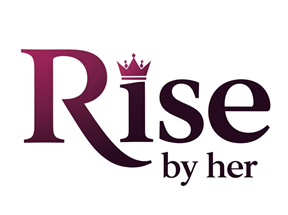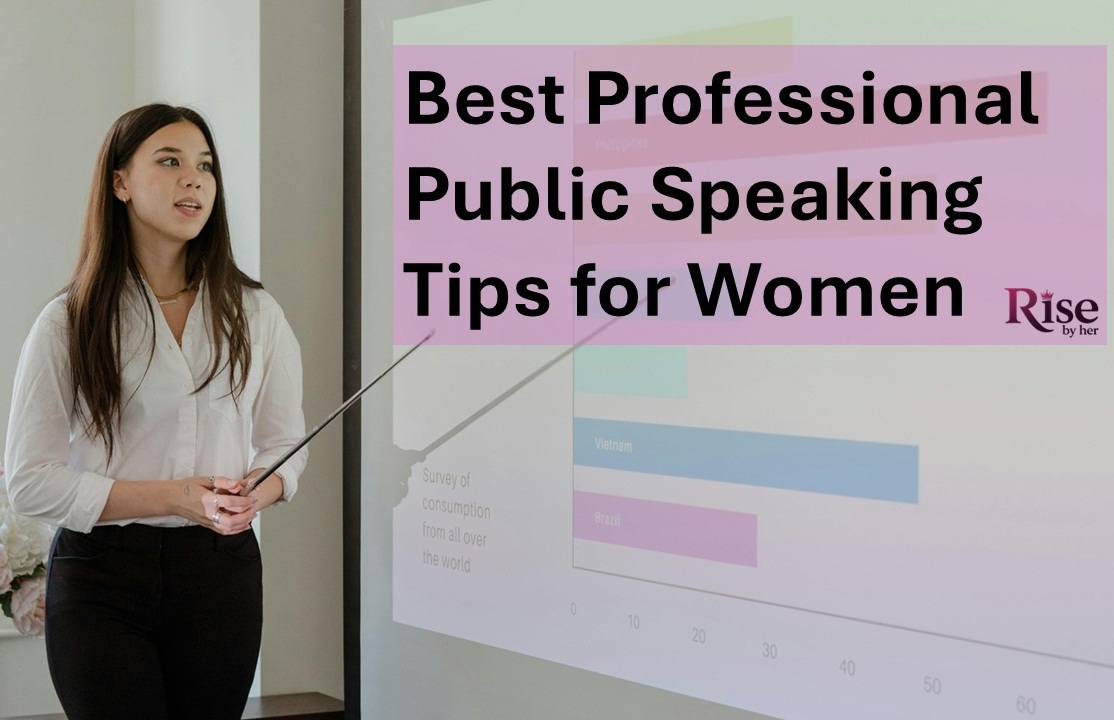Public speaking is an essential skill for women in leadership roles. It boosts visibility, credibility, and influence, enabling leaders to inspire teams, advocate for their ideas, and build strong professional networks. Effective communication helps women stand out and establish themselves as authoritative figures in their industries. Studies show that women who master public speaking are more likely to advance in their careers, as strong leadership and communication skills are crucial for professional progression. For women, this skill is not just about speaking up it’s about making a lasting impact and breaking through barriers to career success.
Reflect on your own public speaking journey; how has it shaped your leadership path?
Overcome Fear and Build Confidence in Public Speaking
Many women face fear and anxiety before stepping onto a stage or speaking in front of an audience. These feelings are normal, but they don’t have to hold you back. Overcoming public speaking fear is crucial for building confidence and stepping into leadership roles with authority. Here are some practical strategies to help you manage anxiety and present with confidence:
- Deep Breathing: One of the simplest ways to calm your nerves is deep breathing. It helps lower stress levels and brings focus to the present moment.
- Practice Makes Perfect: The more you practice, the more comfortable you will feel. Rehearse your speech in front of a mirror, with friends, or even record yourself to refine your delivery.
- Visualization: Picture yourself succeeding. Visualizing a positive outcome can reframe negative thoughts and boost self-assurance before stepping on stage.
It’s also essential to embrace self-belief and stay authentic in your communication. Being true to yourself resonates with audiences and allows you to speak more freely and naturally. When you’re authentic, you’re more likely to connect with your listeners, easing some of the pressure.
Additionally, positive self-talk can be incredibly powerful. Before you step up to speak, remind yourself of your strengths and past achievements. Empowering thoughts like “I am prepared” or “I have something valuable to say” will give you the mental boost needed to speak with confidence.
By practicing these strategies, you can overcome the fear of public speaking and transform it into a tool that enhances your leadership presence.
Master Your Body Language: How Non-Verbal Communication Affects Your Message
Your body language significantly influences how your leadership and authority are perceived during public speaking. For women in leadership roles, non-verbal communication can either enhance or undermine your message. Here are key elements to focus on to make your body language work for you:
Posture: Stand Tall, Lead Strong
A confident posture projects leadership. Standing tall with your shoulders back not only makes you appear more authoritative but also boosts your own confidence. It allows you to speak with more power and conviction.
Eye Contact: Build Connection and Trust
Maintaining steady eye contact with your audience creates a sense of connection. It shows you’re present, engaged, and confident in your words. Avoiding eye contact can make you appear uncertain or disengaged, so ensure you make regular eye contact with different sections of the room.
Hand Gestures: Add Emphasis and Engagement
Using hand gestures naturally to emphasize key points can make your delivery more dynamic. Avoid crossing your arms, which can make you seem closed off. Open hand gestures invite trust and make your message more accessible.
Facial Expressions and Tone: Convey Emotion and Authority
Your facial expressions are powerful tools in communication. A smile can make you seem approachable, while a serious expression conveys authority. Additionally, your tone of voice plays a critical role in delivering your message. A varied tone keeps your audience engaged and ensures your message resonates.
Examples from Successful Women Speakers
Leaders like Michelle Obama and Indra Nooyi use body language to command attention and amplify their words. Their poised posture, strong eye contact, and deliberate gestures help reinforce their messages, making them not only more memorable but also more impactful.
By mastering these aspects of body language, you can communicate your leadership presence effectively, ensuring your words leave a lasting impression.
Craft Your Message: How to Speak with Clarity and Purpose
Clear, purposeful communication is at the heart of powerful public speaking. For women leaders, crafting a message that is both concise and aligned with your leadership values not only strengthens your presence but also inspires trust and action.

Structure with Purpose
Start by organizing your talk into three clear parts:
- Introduction – Grab attention with a story, quote, or question.
- Body – Present 2-3 key points, backed with examples or data.
- Conclusion – Reinforce your message and leave your audience with a clear takeaway or action step.
This simple structure ensures your speech flows naturally and remains focused.
Keep It Clear and Concise
Avoid jargon and long-winded explanations. Aim for clarity over complexity. Use short sentences and impactful language to make your message stick. Your audience should walk away knowing exactly what you stand for and why it matters.
Align with Your Leadership Values
Let your personality and purpose shine through. Speak on topics that align with your values, whether it’s equity, innovation, or resilience. When your message reflects your core beliefs, it becomes more authentic and far more powerful.
Make It Audience-Centered
Think about what your audience needs or wants to hear. Ask: “What value am I delivering?” Tailor your examples and language to match their context and expectations.
Engage and Connect with Your Audience: Building Rapport
Public speaking isn’t just about delivering information but also about creating a connection. For women leaders, building rapport with your audience is key to inspiring trust, attention, and lasting impact.
Speak to the Heart and Mind
Engaging your audience means connecting emotionally and intellectually. Use a balance of facts and feelings, pair data with human stories, and explain why your message matters, not just what it is.
Harness the Power of Storytelling
Stories are one of the most powerful tools you have. Share a personal anecdote, a lesson learned, or a challenge overcome. Your authenticity invites others in and makes your message relatable and memorable.
Make It Interactive
Encourage your audience to participate, even in subtle ways:
- Ask rhetorical or direct questions.
- Use a quick show of hands or polls.
- Invite brief moments of reflection.
These moments turn listeners into participants.
Lead with Your Unique Perspective
Women leaders bring distinct experiences to the stage, don’t shy away from them. Whether you’re sharing a career lesson, a personal struggle, or a leadership insight, your voice adds value. That authenticity is what builds trust and connection.
Practice, Practice, Practice: How Rehearsal Leads to Success
Public speaking isn’t just about talent, it’s a skill that improves with consistent practice. For women leaders, rehearsing your message helps build confidence, reduce anxiety, and sharpen your delivery.
Why Rehearsal Matters
Practice transforms nerves into confidence. It allows you to:
- Refine your tone and timing.
- Strengthen message clarity.
- Reduce filler words and awkward pauses.
Think of it as building muscle memory: the more you rehearse, the more natural your delivery becomes.
Ways to Practice Effectively
You don’t need a big stage to prepare like a pro. Try these techniques:
- Record Yourself: Listen for tone, pacing, and clarity. Are you engaging? Clear? Repetitive?
- Use a Mirror: Watch your facial expressions, gestures, and posture.
- Simulate Real Conditions: Practice in the clothes, setting, and time you’ll actually speak to reduce surprises.
- Mock Presentations: Present to a friend or mentor and ask for honest, constructive feedback.
Start Small, Grow Bold
You don’t need a TED Talk to start. Look for small opportunities:
- Team meetings
- Local networking events
- Online panels or webinars
Each moment you speak up is a step toward greater impact.
Leveraging Technology: Tools and Platforms for Women Leaders to Speak and Shine
In today’s digital-first world, women leaders have more opportunities than ever to amplify their voices; thanks to technology. Whether it’s leading a webinar, delivering a keynote on Zoom, or creating thought-leadership content on LinkedIn, tech tools are essential for modern public speaking.
Speak Beyond the Stage: Embrace Virtual Platforms
Public speaking is no longer limited to physical rooms. Women leaders can now:
- Host or speak at virtual conferences, webinars, and podcasts.
- Reach global audiences from their own office.
- Build credibility as thought leaders in online communities.
Embracing these platforms helps broaden your impact and flexibility, especially for those balancing leadership with personal life.
Top Tech Tools to Elevate Your Presence
Here are a few reliable tools to boost your public speaking game:
- Zoom & Microsoft Teams: For virtual presentations and meetings.
- Canva & PowerPoint: To design engaging, polished slide decks.
- Teleprompter Apps: Like PromptSmart or BigVu for smoother delivery.
- Recording Tools: Loom or OBS Studio to practice and refine your talk.
- Speech Coach Tools: Platforms like Orai or Yoodli use AI to give feedback on pace, tone, and clarity.
Adapt and Thrive in the Virtual Era
Mastering virtual speaking is a leadership asset. Women who learn to present well online stand out in boardrooms, on screens, and in their industries.
Overcoming Gender Bias in Public Speaking: Speaking with Authority
Public speaking can feel like a high-stakes arena, especially when gender bias comes into play. Women leaders often find themselves navigating unspoken expectations, being told to “soften their tone,” “smile more,” or avoid sounding “too assertive.” These biases can undermine both confidence and credibility if not addressed directly.
Recognizing the Bias
Gender bias in public speaking isn’t always obvious. It can show up as:
- Being interrupted or spoken over more often.
- Having your expertise questioned.
- Receiving feedback focused on tone or appearance rather than content.
Acknowledging these experiences is the first step toward reclaiming your voice and power.
Strategies to Speak with Authority
Women can counteract bias and speak with clarity and confidence by:
- Owning your expertise: Start with a strong opening that highlights your experience and credentials.
- Setting boundaries: Politely redirect interruptions or off-topic comments.
- Using assertive language: Avoid minimizing phrases like “I think” or “I just wanted to say.” Speak decisively and with intention.
- Maintaining composure: Control your pace, posture, and tone to command presence.
Embrace Your Unique Leadership Voice
You don’t have to speak like someone else to be heard. Your voice (your tone, your rhythm, your message) is a leadership tool. Authority isn’t about fitting into a mold; it’s about standing confidently in your message, even when others expect you to shrink.
Real-Life Success Stories: Women Leaders Who Mastered Public Speaking
Public speaking has been a game-changer for countless women leaders. By stepping up to the mic, they’ve not only influenced audiences but also redefined what leadership looks and sounds like.
Michelle Obama – Leading with Authenticity
Michelle Obama’s speeches, such as her iconic DNC address (“When they go low, we go high”), are praised for their emotional honesty and strength. She connects by sharing personal stories and speaking from the heart, proving that vulnerability can be a powerful leadership tool.
Oprah Winfrey – Storytelling as Strategy
From interviews to keynotes, Oprah uses storytelling to captivate and inspire. Her 2018 Golden Globes speech reminded the world of the power of voice in social change. Her style is warm, clear, and emotionally resonant, a blueprint for building rapport with any audience.
Sheryl Sandberg – Data Meets Emotion
As the former COO of Meta and author of Lean In, Sheryl Sandberg combines data-driven insight with real-life experiences to challenge workplace inequality. Her TED Talk on women in leadership is still widely referenced for its clarity and call to action.
What We Learn from Them
- Great women speakers use authenticity, storytelling, and strategy.
- They faced doubt, criticism, and bias, yet pushed through with preparation and purpose.
- Their voices didn’t just elevate their careers, they inspired millions.
Inspiration Boost: Every confident speaker you admire once stood in your shoes. With practice, purpose, and persistence, your story can lead and empower others too.
Conclusion and Next Steps: Mastering Public Speaking to Empower Your Leadership
Public speaking is more than a skill, it’s a gateway to greater influence, leadership, and self-empowerment. Throughout this guide, we’ve explored the foundational tools every woman leader needs to speak with confidence, clarity, and authority.
Here’s a quick recap of what we’ve covered:
- Understanding the importance of public speaking in shaping your leadership journey
- Overcoming fear and building last
- ng confidence through mindset shifts and practical strategies
- Using body language and non-verbal cues to command attention
- Crafting a clear, purpose-driven message that resonates
- Engaging with your audience and building genuine rapport
- Rehearsing regularly and embracing feedback for continuous growth
- Leveraging technology to shine in both physical and virtual settings
- Speaking with authority even when navigating gender bias
- Learning from inspiring women leaders who have turned public speaking into a superpower
Next Steps:
- Start small: Take on a team meeting, a networking intro, or a short video presentation.
- Practice with purpose: Use tools like mirrors, recordings, or trusted peers.
- Sign up for our newsletter or connect with us on social media to stay updated on the latest trends, tips, and resources designed to help you thrive in your career.


